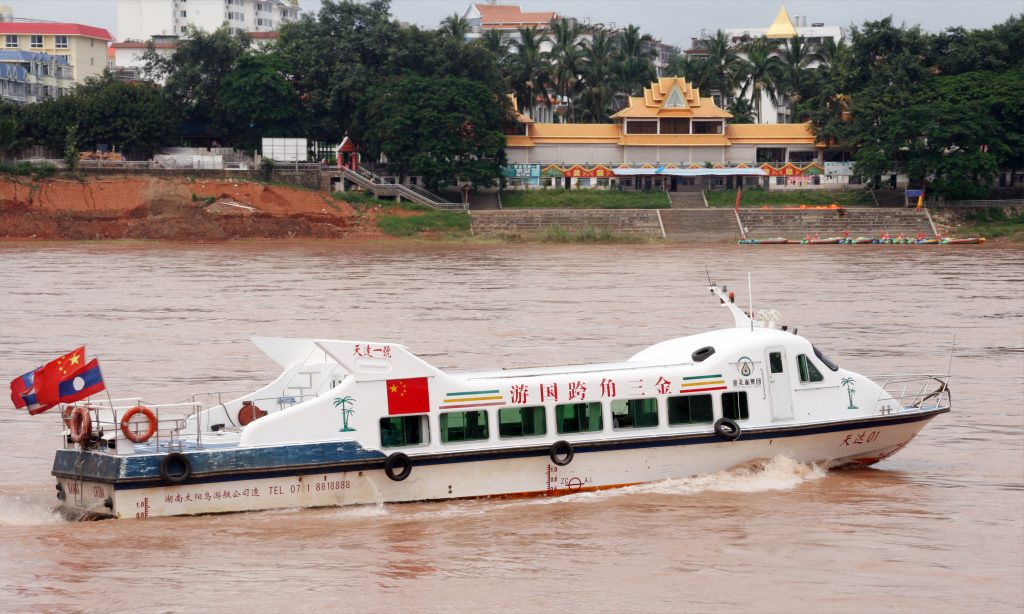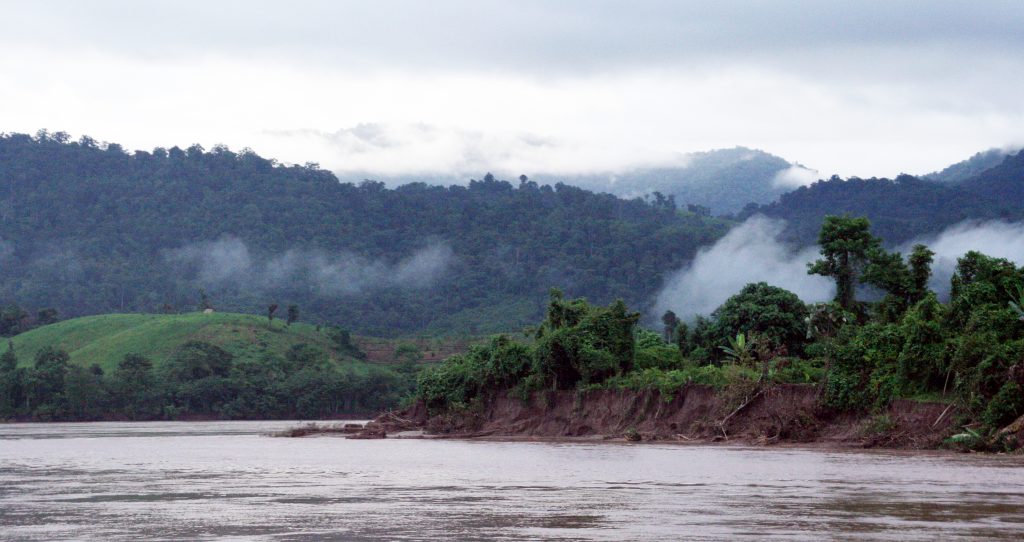China to Laos (Mengla to Luang Nam Tha)
Transport and Procedures:
China to Laos by Road; This summer we crossed from China into Laos and found that the border crossing is a mere formality. We left the dour Chinese town of Mengla at 7.00 am and by 9.30 we were already in Luang Nam Tha. As it was pouring down with rain when we left the hotel, we simply took a taxi all the way to the border at Mohan, the journey took about 45 minutes on a spanking new highway and cost a very reasonable 150 Yuan. At Mohan we had to wait a bit, as the Chinese border post doesn’t open until 8.30 am, when the flag is raised with much pomp and ceremony.
Many Ways to go
There are, however, many other ways you can go: there are minibuses to Mohan that leave every 20 minutes from the Southern bus station. There is one daily bus from Mengla directly to Luang Nam Tha that leaves from the Northern bus station at 9.30 am. As we hadn’t been able to book tickets or even speak to the bus staff, we didn’t want to wait for this direct bus, in case there was a problem with us not having Lao visas yet and needing to get them at the border.
For those with very little time, there are even daily sleeper buses that go all the way from Kunming to Vientiane and Luang Prabang. New smoother highways, especially on the Chinese side, mean that this option may not be quite as horrific as it once was.*
(*Update; Now there is a high speed train from Kunming to Vientiane that passes through Luang Nam Tha and Luang Prabang).
Once you have been ‘stamped’ out of China, a tuk-tuk will whiz you from the Chinese border post to the Lao one, for 5 Yuan a person.
Procedures on the Lao side are easy and transparent: a list of visa fees for different nationalities is posted on the window and you are asked to fill in a form, hand over one photo and pay the fee (in our case 35 Dollars). Then you are ‘stamped’ in for a duration of 30 days.
There is nowhere to change money at the actual border post, for that you will have to go to the first Lao town, which is Boten. However, Chinese currency is widely accepted.
From the border post, you can take a sawngthaew, the converted pick-up trucks with benches that provide much of Lao transport, to Boten, where you can pick up a bus to Luang Nam Tha. Alternatively, you can hire your own sawngthaew all the way to Luang Nam Tha for around 120 to 150 Yuan, depending on your bargaining skills.
One thing that surprised us here but seemed normal all over Laos is that even when you hire or charter an entire vehicle, the driver will still let local people on for short distances. Given the precarious state of transport in many places we didn’t really mind.
Accommodation:
If you can avoid staying in Mengla you would be doing yourself a favour, as the town is a bit of a dump. We stayed in a cheap and fairly nasty Chinese hotel almost opposite the northern bus station. The price of 60 Yuan a double was its only redeeming factor. Later on we saw several better options, all on or just off the main drag: the Hai La Hotel, a grey stone building with columns close to the Southern bus station with doubles for 120 Yuan, the pleasant-looking Post Hotel, attached to a telecommunications building and with its entrance just off the main street, and even an up-market white multi- story hotel right in the centre.
However, with the recent opening of new highways you shouldn’t really have to stay in Mengla; Xishuangbanna’s pleasant capital, Jinghong, is now within easy reach of the Lao border, as is the much nicer town of Menglun with its fantastic botanical garden.
Lastly, the tiny, one-street border town of Mohan looked brand-new and cheerful when we passed through. We spotted a couple of simple, but clean-looking guesthouses and restaurants, which might make this quite a bearable option, should you arrive too late to enter Laos.
























